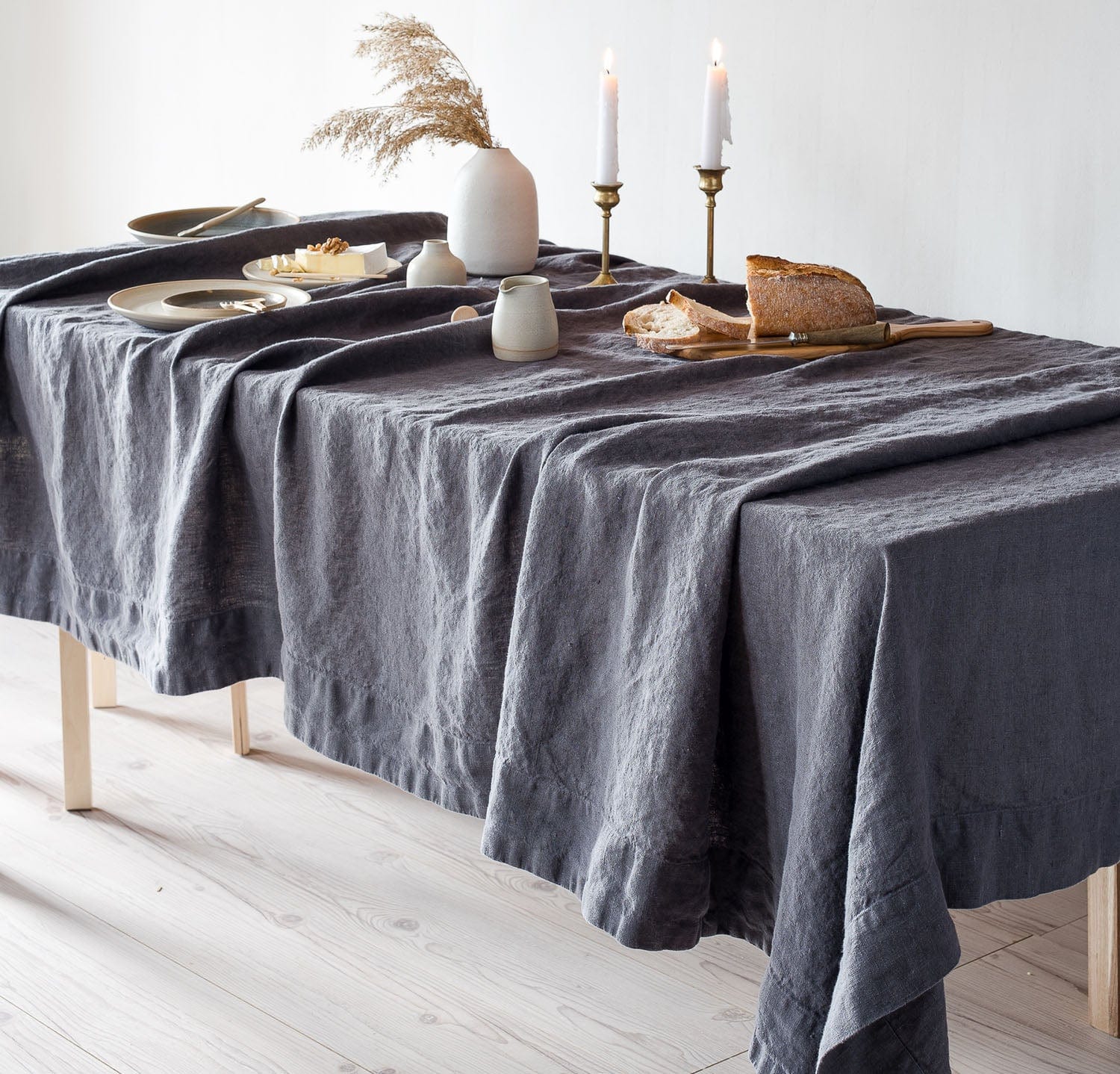DIY Table Runner Projects: Custom-made Layouts for Your Home
DIY Table Runner Projects: Custom-made Layouts for Your Home
Blog Article
Linen Textile Innovations: Exploring Modern Trends and Creative Applications in Style and Textile Market
From lasting production techniques to sophisticated weaving innovations, the advancement of linen is reshaping the landscape of the fabric sector. As we dive into the realms of innovative style applications and the development of bed linen blends and crossbreed fabrics, a new phase unravels in which bed linen's role in future textile innovations takes center phase.
Lasting Practices in Bed Linen Manufacturing
Lasting methods in bed linen manufacturing have actually ended up being significantly essential in the textile industry's efforts to reduce environmental effect and advertise honest sourcing techniques. Bed linen, an all-natural fiber originated from the flax plant, supplies a range of advantages such as biodegradability, breathability, and toughness. Nonetheless, standard methods of linen production can involve substantial water consumption, pesticide usage, and energy-intensive processes.
To deal with these obstacles, many textile suppliers are adopting lasting techniques throughout the linen manufacturing procedure. This consists of sourcing flax from organic ranches that stay clear of hazardous pesticides and chemicals, implementing water-efficient retting strategies to extract fibers from the flax stalks, and using green dyes and surfaces. In addition, some companies are spending in eco-friendly energy sources to power their production centers and reducing waste through recycling and upcycling efforts.
Technical Advancements in Linen Weaving
With the growing focus on lasting techniques in linen manufacturing, the fabric industry is now observing a surge in technical developments specifically targeted at reinventing the art of linen weaving. These innovations are reshaping the means linen fabrics are generated, using increased effectiveness, quality, and creative thinking in weaving strategies.
One of the essential technological advancements in linen weaving is the combination of electronic looms. These innovative looms are outfitted with software application that allows for detailed and complicated styles to be woven with precision. By digitizing the weaving procedure, suppliers can accomplish greater uniformity and accuracy in their bed linen materials.
Additionally, improvements in thread spinning technology have actually allowed the manufacturing of finer and even more resilient linen threads - table cloths. This causes softer and smoother bed linen materials that maintain their high quality also after several usages and cleans
In addition, the development of environment-friendly dyeing procedures and surfaces for bed linen materials is getting traction. These sustainable techniques not just minimize the ecological effect yet likewise deal with the enhancing consumer demand for ethically created fabrics.
Creative Layout Applications for Bed Linen
Innovative creative approaches are progressively shaping the innovative design applications for bed linen in the textile sector. Bed linen's all-natural aesthetic appeal and capacity to blend with various other materials make it a preferred selection for creating special garments and devices that cater to the environmentally aware customer.
Furthermore, designers are trying out linen in home style, using its breathable and long lasting nature to craft stylish home furnishings such as curtains, bed linens, and furniture. The structure and drape of bed linen bring a feeling of sophistication and comfort to interior areas, adding a touch of style to modern-day homes.

Bed Linen Blends and Crossbreed Fabrics

Hybrid fabrics, on the various other hand, take the idea of blending a step further by integrating additional elements such as metallic threads, recycled materials, or conductive fibers. These ingenious fabrics not only increase the style opportunities yet also introduce useful elements like conductivity, antimicrobial residential or commercial properties, or boosted longevity. Hybrid textiles are progressively being made use of in numerous address sectors, including style, indoor layout, and technological fabrics, where the demand for multifunctional products is on the increase.
Bed linen's Role in Future Fabric Innovations
:max_bytes(150000):strip_icc()/smooth-linen-tableware-sky-24_2000x-e91a79aab4354001b5445ec12d511141.jpg)
In the realm of future fabric technologies, linen is anticipated to be a principal in the growth of advanced practical materials. Scientists and developers are discovering ways to enhance linen's intrinsic qualities with technological innovations, such as including wise fabrics, nanotechnology, and performance finishes. These technologies intend to elevate linen's performance characteristics, making it suitable for a broader series of applications, from activewear to protective clothes.
Additionally, the combination of linen with various other all-natural or synthetic fibers opens unlimited possibilities for producing unique textiles with special properties and performances. By leveraging linen's attributes and exploring innovative blends, the fabric industry is poised to present amazing growths that satisfy developing consumer demands and sustainability demands.
Verdict
To conclude, the expedition of lasting techniques, technological improvements, imaginative style applications, linen blends, and its role in future textile innovations highlight the constant advancement of linen textile in the contemporary design and textile industry. With an emphasis on innovation and imagination, the convenience and green nature of linen make it an important material for producers and developers alike, leading the way for additional developments and innovations in the area of fabrics.
As we dig right into the worlds of innovative style applications and the development of linen blends and hybrid fabrics, a brand-new chapter unfolds in which linen's role in future textile advancements takes center phase.
Checking out the blend of linen with other materials has led to the emergence of cutting-edge blends and crossbreed textiles in the modern textile market. Bed linen blends offer an one-of-a-kind mix of the characteristics of bed linen with those of other fibers, resulting in textiles that have boosted properties such as increased sturdiness, enhanced draping, and lowered wrinkling.The development of linen blends and hybrid textiles has established the phase for Linen to play an essential function in driving future fabric developments.In the realm of future textile advancements, bed linen is anticipated to see this here be a crucial gamer in the development of sophisticated practical materials.
Report this page